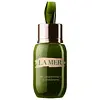What's inside
What's inside
 Key Ingredients
Key Ingredients

 Benefits
Benefits

 Concerns
Concerns

 Ingredients Side-by-side
Ingredients Side-by-side

Aloe Barbadensis Leaf Juice
Skin ConditioningGlyceryl Stearate
EmollientPropylene Glycol
HumectantCetyl Alcohol
EmollientPEG-100 Stearate
Lanolin
EmollientSorbitol
HumectantEthylhexyl Palmitate
EmollientEthylhexyl Stearate
EmollientDiethylhexyl Adipate
EmollientAllantoin
Skin ConditioningPropolis Extract
Skin ConditioningLanolin Alcohol
EmollientDimethicone
EmollientTocopherol
AntioxidantZea Mays Oil
EmulsifyingChamomilla Recutita Flower Extract
MaskingTriethanolamine
BufferingAscorbic Acid
AntioxidantDisodium EDTA
Diazolidinyl Urea
PreservativeMethylparaben
PreservativePropylparaben
PreservativeParfum
MaskingAloe Barbadensis Leaf Juice, Glyceryl Stearate, Propylene Glycol, Cetyl Alcohol, PEG-100 Stearate, Lanolin, Sorbitol, Ethylhexyl Palmitate, Ethylhexyl Stearate, Diethylhexyl Adipate, Allantoin, Propolis Extract, Lanolin Alcohol, Dimethicone, Tocopherol, Zea Mays Oil, Chamomilla Recutita Flower Extract, Triethanolamine, Ascorbic Acid, Disodium EDTA, Diazolidinyl Urea, Methylparaben, Propylparaben, Parfum
Cyclopentasiloxane
EmollientAlgae Extract
EmollientGlycerin
HumectantDimethicone
EmollientPolysilicone-11
Isononyl Isononanoate
EmollientDimethicone/PEG-10/15 Crosspolymer
Cyclohexasiloxane
EmollientSesamum Indicum Seed Oil
EmollientMedicago Sativa Seed Powder
Skin ConditioningHelianthus Annuus Seedcake
AbrasivePrunus Amygdalus Dulcis Seed Meal
AbrasiveEucalyptus Globulus Leaf Oil
PerfumingSodium Gluconate
Skin ConditioningCopper Gluconate
Skin ConditioningCalcium Gluconate
HumectantMagnesium Gluconate
Skin ConditioningZinc Gluconate
Skin ConditioningTocopheryl Succinate
AntioxidantNiacin
SmoothingSesamum Indicum Seed Powder
Skin ConditioningWater
Skin ConditioningDimethicone Crosspolymer
Emulsion StabilisingLaminaria Ochroleuca Extract
Skin ConditioningTriticum Vulgare Flour Lipids
Skin ConditioningCitrus Aurantifolia Peel Extract
CleansingCrithmum Maritimum Extract
Skin ConditioningAlteromonas Ferment Extract
Skin ConditioningChlorella Vulgaris Extract
Skin ConditioningYeast Extract
Skin ConditioningCholesterol
EmollientLinoleic Acid
CleansingTocopherol
AntioxidantTetraacetylphytosphingosine
Skin ConditioningCaprylic/Capric Triglyceride
MaskingRosmarinus Officinalis Leaf Oil
MaskingOcimum Basilicum Oil
MaskingLavandula Angustifolia Oil
MaskingLavandula Hybrida Oil
EmollientDipropylene Glycol
HumectantAlcohol Denat.
AntimicrobialSodium Citrate
BufferingParfum
MaskingEugenol
PerfumingLimonene
PerfumingLinalool
PerfumingBHT
AntioxidantPhenoxyethanol
PreservativePotassium Sorbate
PreservativeCyclopentasiloxane, Algae Extract, Glycerin, Dimethicone, Polysilicone-11, Isononyl Isononanoate, Dimethicone/PEG-10/15 Crosspolymer, Cyclohexasiloxane, Sesamum Indicum Seed Oil, Medicago Sativa Seed Powder, Helianthus Annuus Seedcake, Prunus Amygdalus Dulcis Seed Meal, Eucalyptus Globulus Leaf Oil, Sodium Gluconate, Copper Gluconate, Calcium Gluconate, Magnesium Gluconate, Zinc Gluconate, Tocopheryl Succinate, Niacin, Sesamum Indicum Seed Powder, Water, Dimethicone Crosspolymer, Laminaria Ochroleuca Extract, Triticum Vulgare Flour Lipids, Citrus Aurantifolia Peel Extract, Crithmum Maritimum Extract, Alteromonas Ferment Extract, Chlorella Vulgaris Extract, Yeast Extract, Cholesterol, Linoleic Acid, Tocopherol, Tetraacetylphytosphingosine, Caprylic/Capric Triglyceride, Rosmarinus Officinalis Leaf Oil, Ocimum Basilicum Oil, Lavandula Angustifolia Oil, Lavandula Hybrida Oil, Dipropylene Glycol, Alcohol Denat., Sodium Citrate, Parfum, Eugenol, Limonene, Linalool, BHT, Phenoxyethanol, Potassium Sorbate
 Reviews
Reviews

Ingredients Explained
These ingredients are found in both products.
Ingredients higher up in an ingredient list are typically present in a larger amount.
Dimethicone is a type of synthetic silicone created from natural materials such as quartz.
What it does:
Dimethicone comes in different viscosities:
Depending on the viscosity, dimethicone has different properties.
Ingredients lists don't always show which type is used, so we recommend reaching out to the brand if you have questions about the viscosity.
This ingredient is unlikely to cause irritation because it does not get absorbed into skin. However, people with silicone allergies should be careful about using this ingredient.
Note: Dimethicone may contribute to pilling. This is because it is not oil or water soluble, so pilling may occur when layered with products. When mixed with heavy oils in a formula, the outcome is also quite greasy.
Learn more about DimethiconeParfum is a catch-all term for an ingredient or more that is used to give a scent to products.
Also called "fragrance", this ingredient can be a blend of hundreds of chemicals or plant oils. This means every product with "fragrance" or "parfum" in the ingredients list is a different mixture.
For instance, Habanolide is a proprietary trade name for a specific aroma chemical. When used as a fragrance ingredient in cosmetics, most aroma chemicals fall under the broad labeling category of “FRAGRANCE” or “PARFUM” according to EU and US regulations.
The term 'parfum' or 'fragrance' is not regulated in many countries. In many cases, it is up to the brand to define this term.
For instance, many brands choose to label themselves as "fragrance-free" because they are not using synthetic fragrances. However, their products may still contain ingredients such as essential oils that are considered a fragrance by INCI standards.
One example is Calendula flower extract. Calendula is an essential oil that still imparts a scent or 'fragrance'.
Depending on the blend, the ingredients in the mixture can cause allergies and sensitivities on the skin. Some ingredients that are known EU allergens include linalool and citronellol.
Parfum can also be used to mask or cover an unpleasant scent.
The bottom line is: not all fragrances/parfum/ingredients are created equally. If you are worried about fragrances, we recommend taking a closer look at an ingredient. And of course, we always recommend speaking with a professional.
Learn more about ParfumTocopherol (also known as Vitamin E) is a common antioxidant used to help protect the skin from free-radicals and strengthen the skin barrier. It's also fat soluble - this means our skin is great at absorbing it.
Vitamin E also helps keep your natural skin lipids healthy. Your lipid skin barrier naturally consists of lipids, ceramides, and fatty acids. Vitamin E offers extra protection for your skin’s lipid barrier, keeping your skin healthy and nourished.
Another benefit is a bit of UV protection. Vitamin E helps reduce the damage caused by UVB rays. (It should not replace your sunscreen). Combining it with Vitamin C can decrease sunburned cells and hyperpigmentation after UV exposure.
You might have noticed Vitamin E + C often paired together. This is because it is great at stabilizing Vitamin C. Using the two together helps increase the effectiveness of both ingredients.
There are often claims that Vitamin E can reduce/prevent scarring, but these claims haven't been confirmed by scientific research.
Learn more about Tocopherol